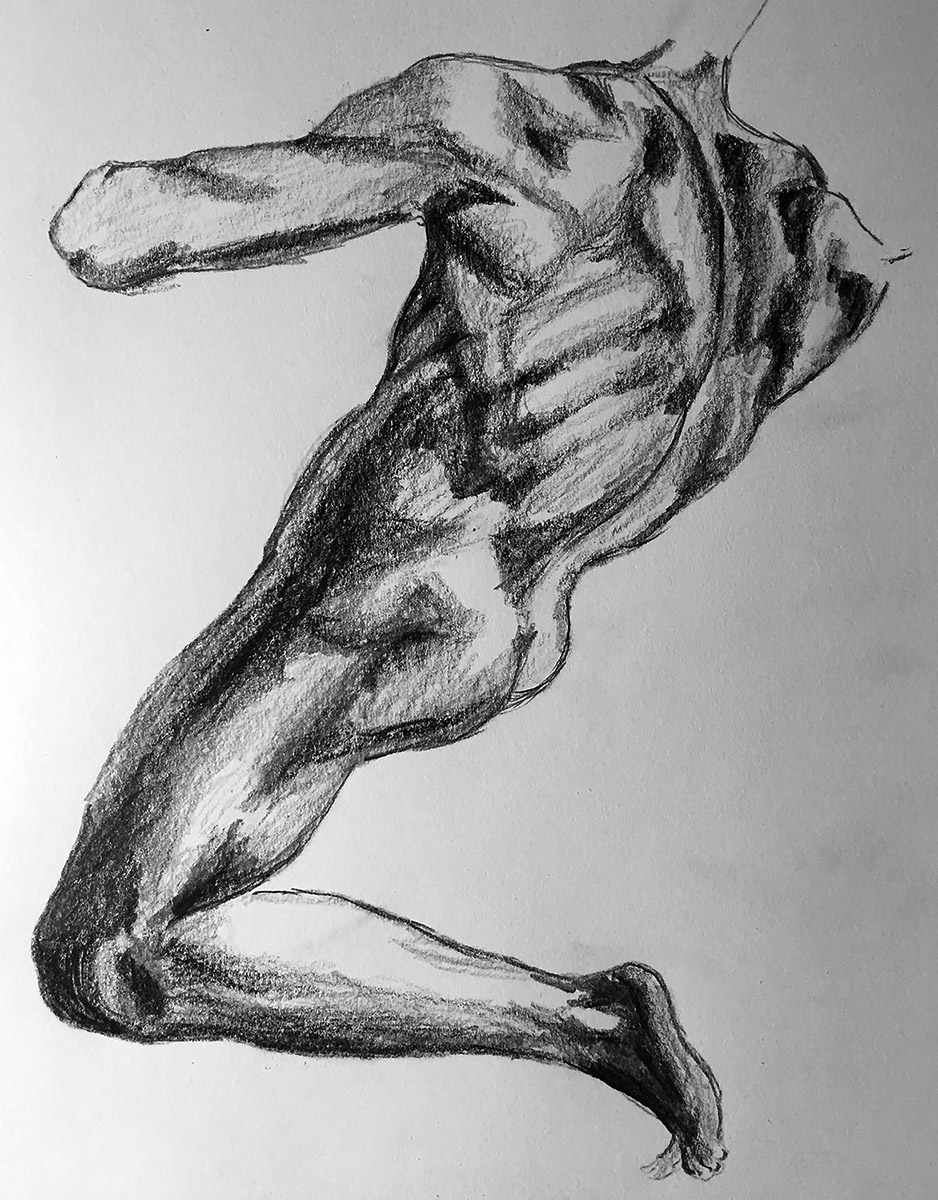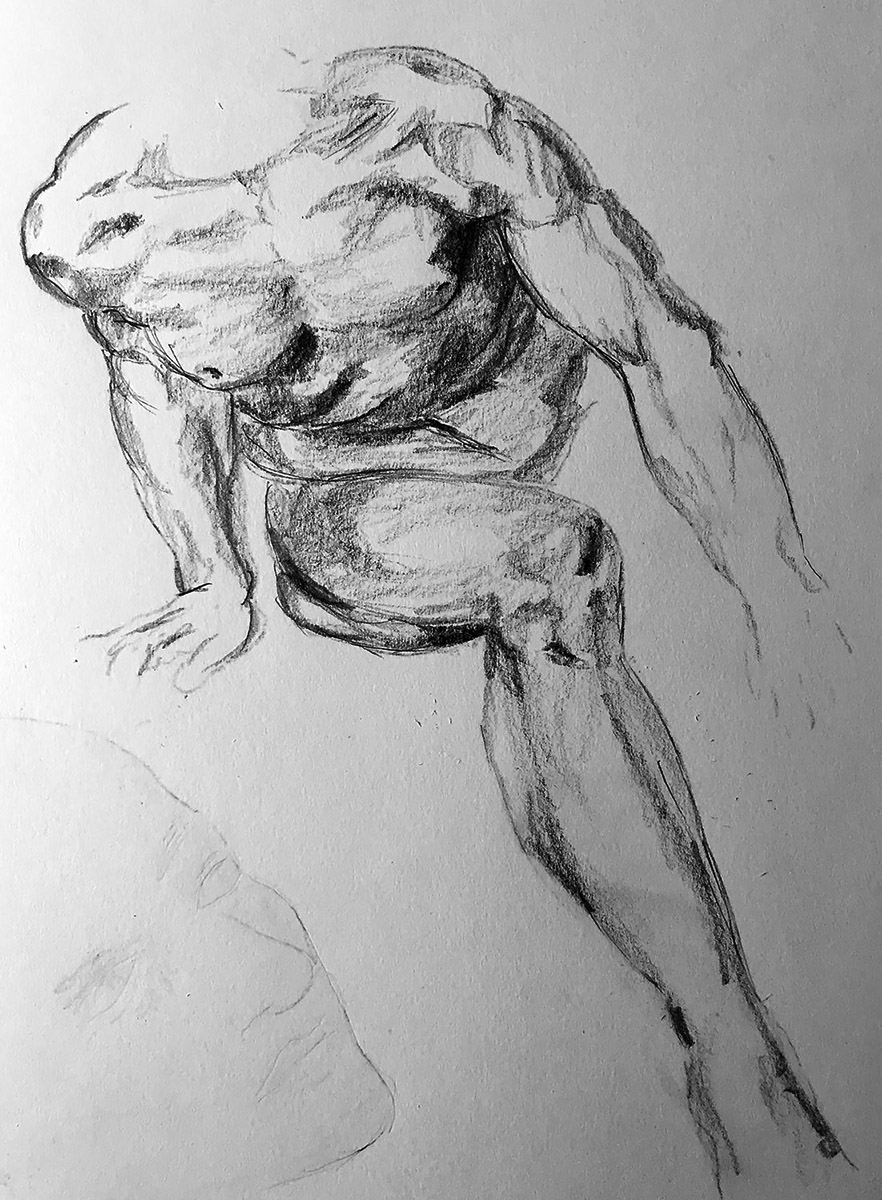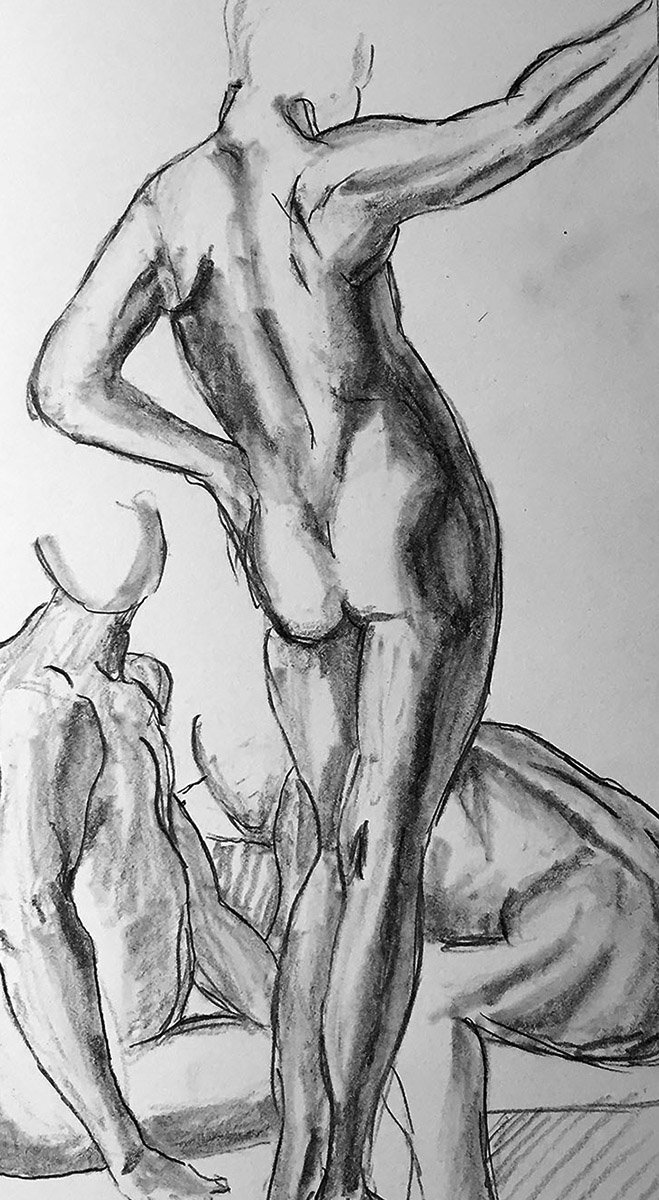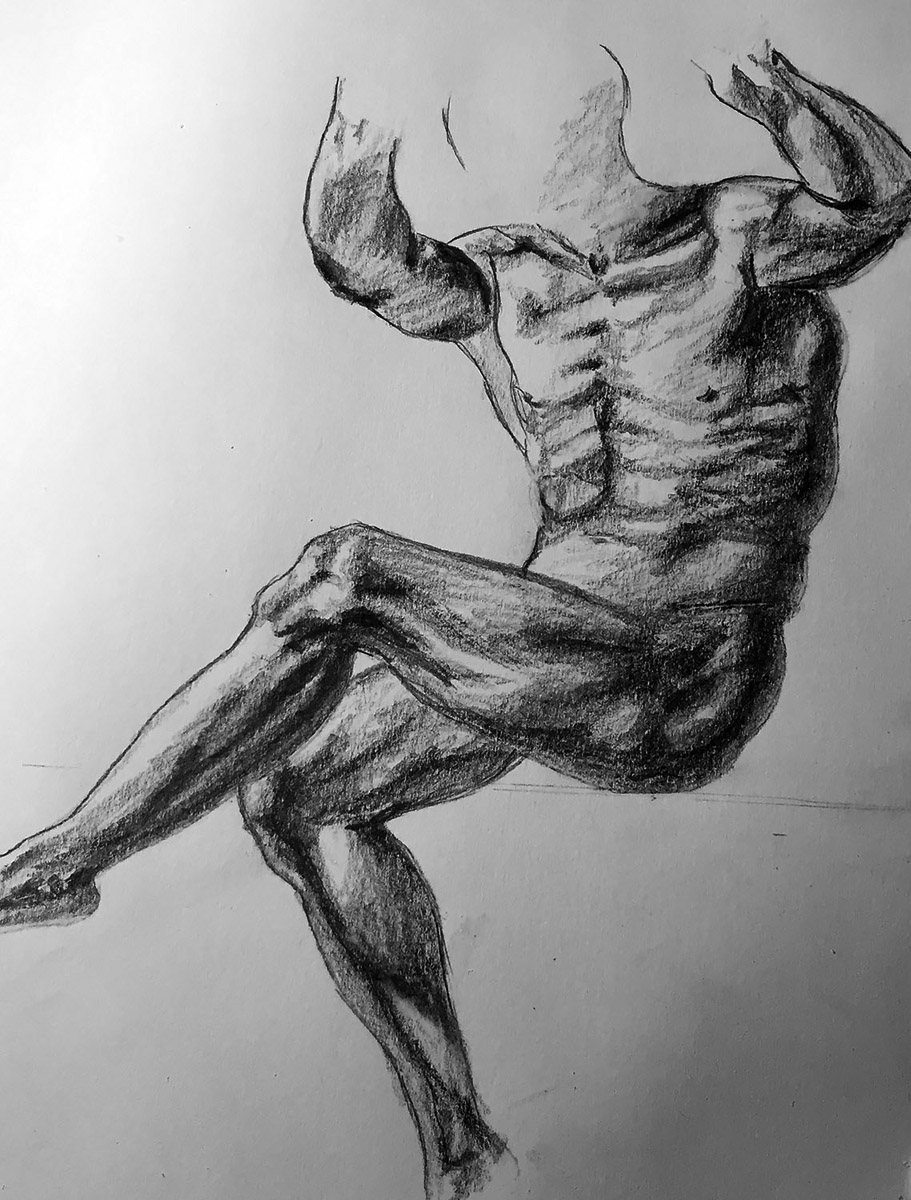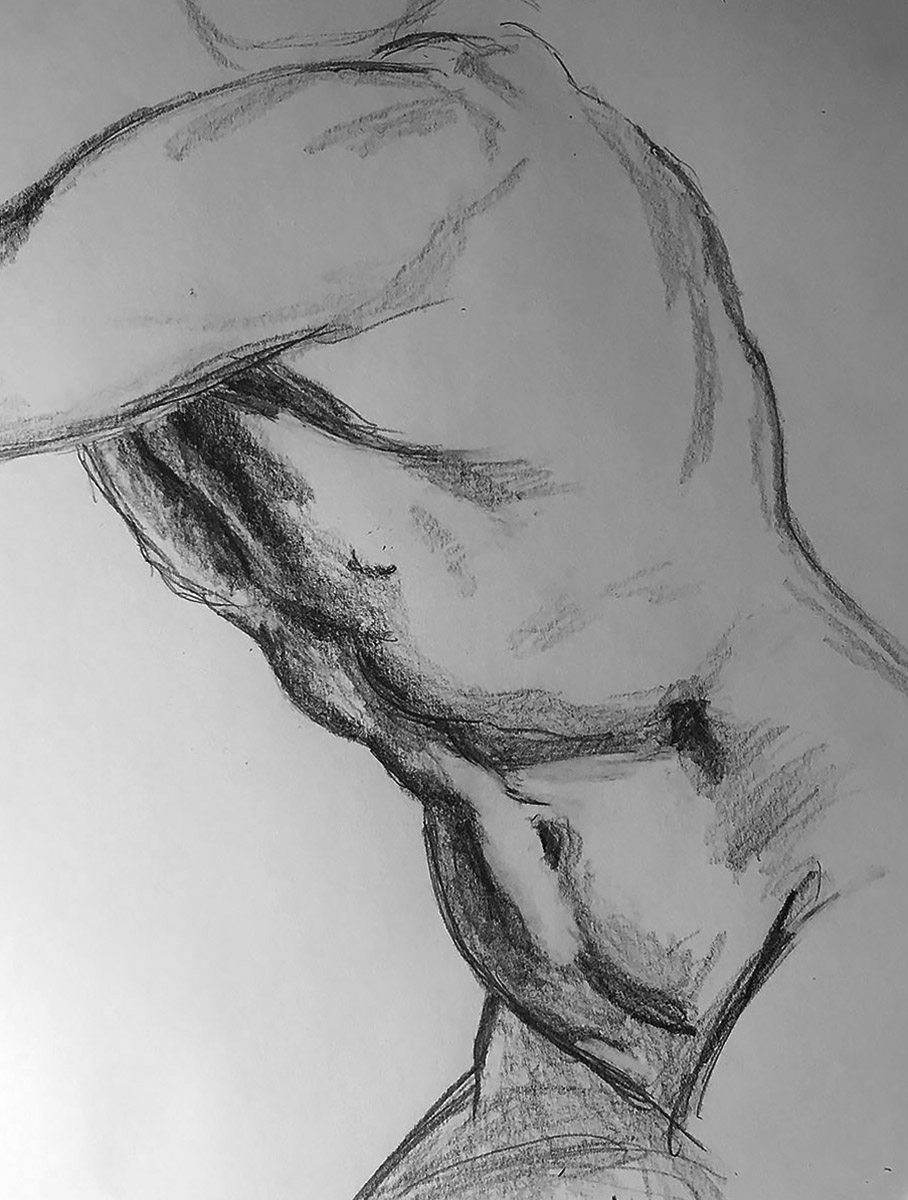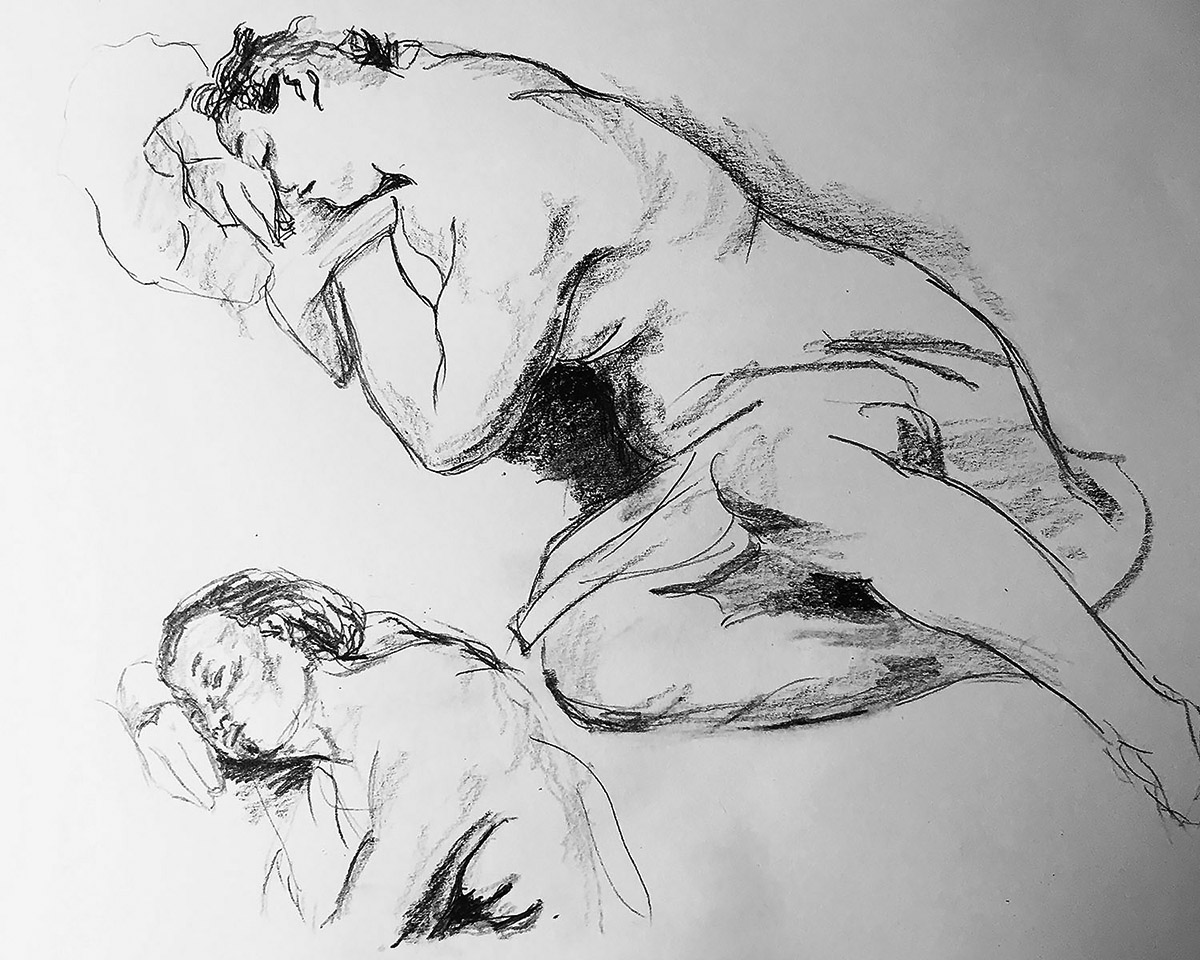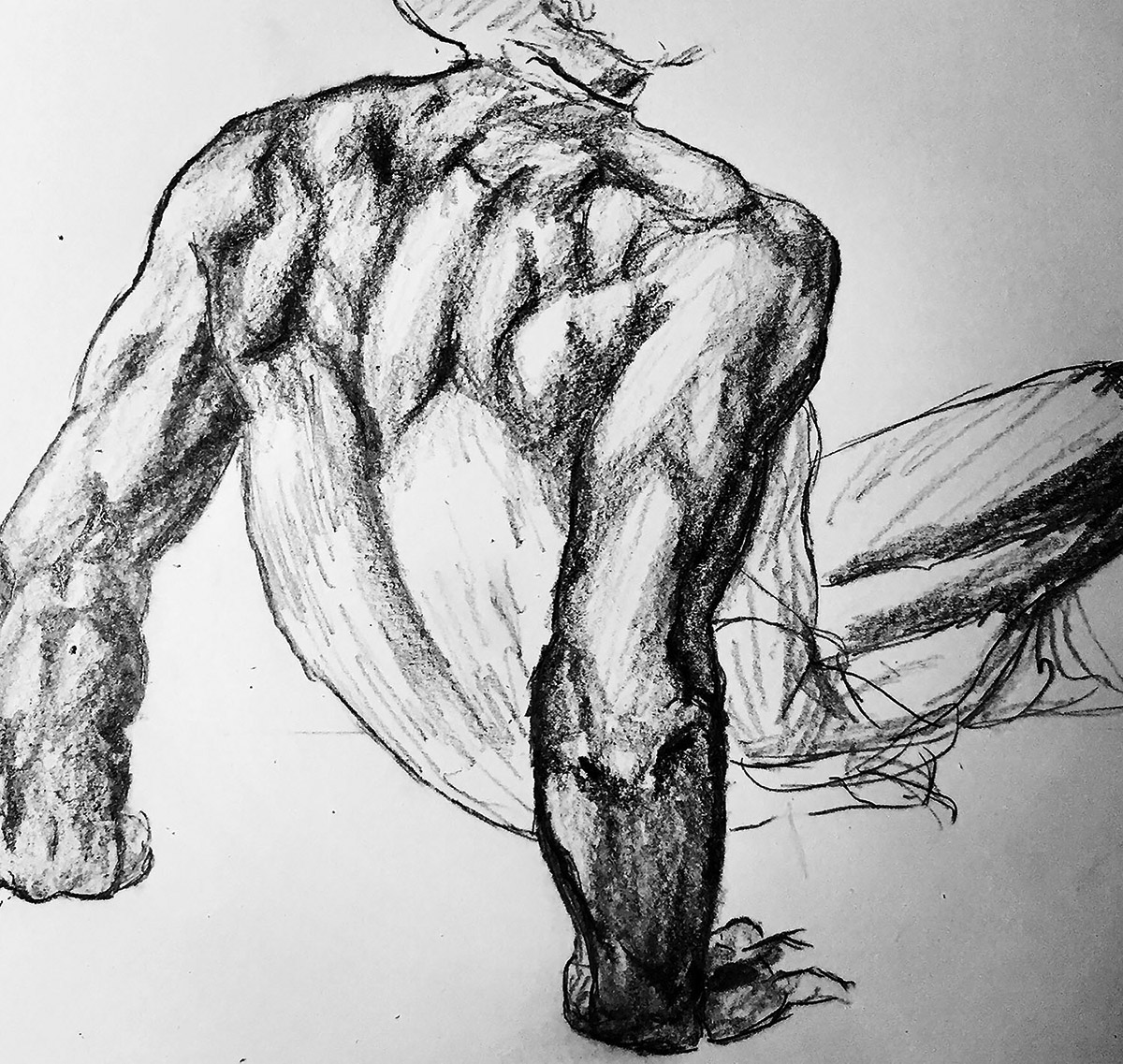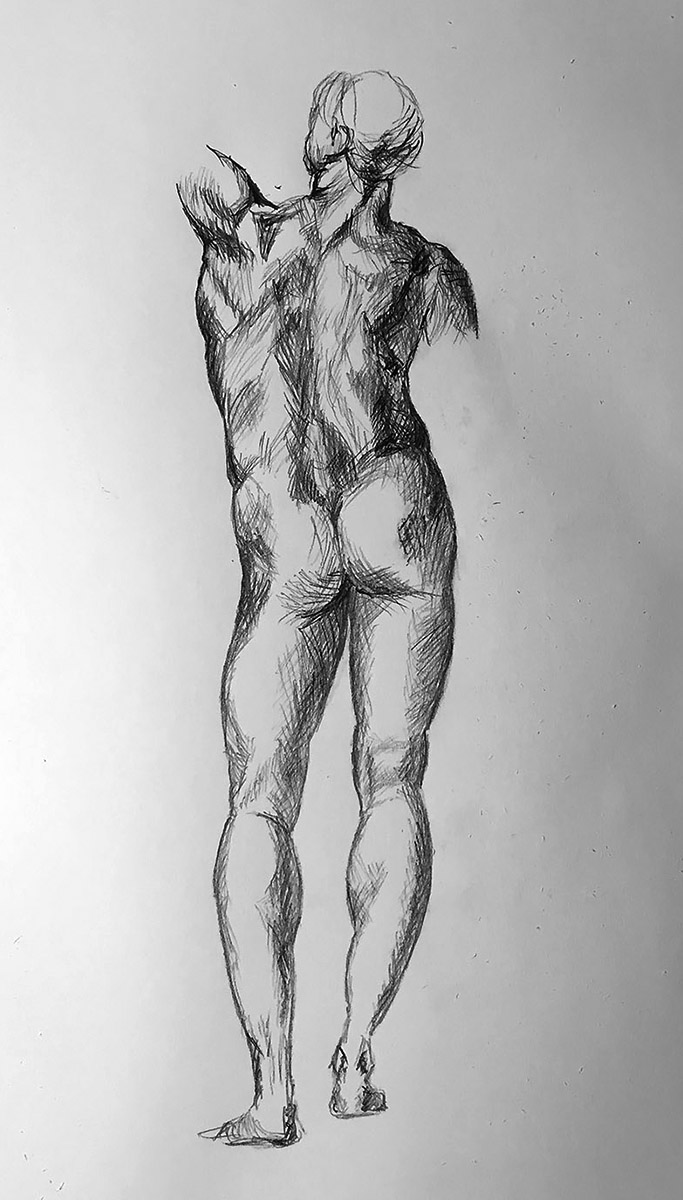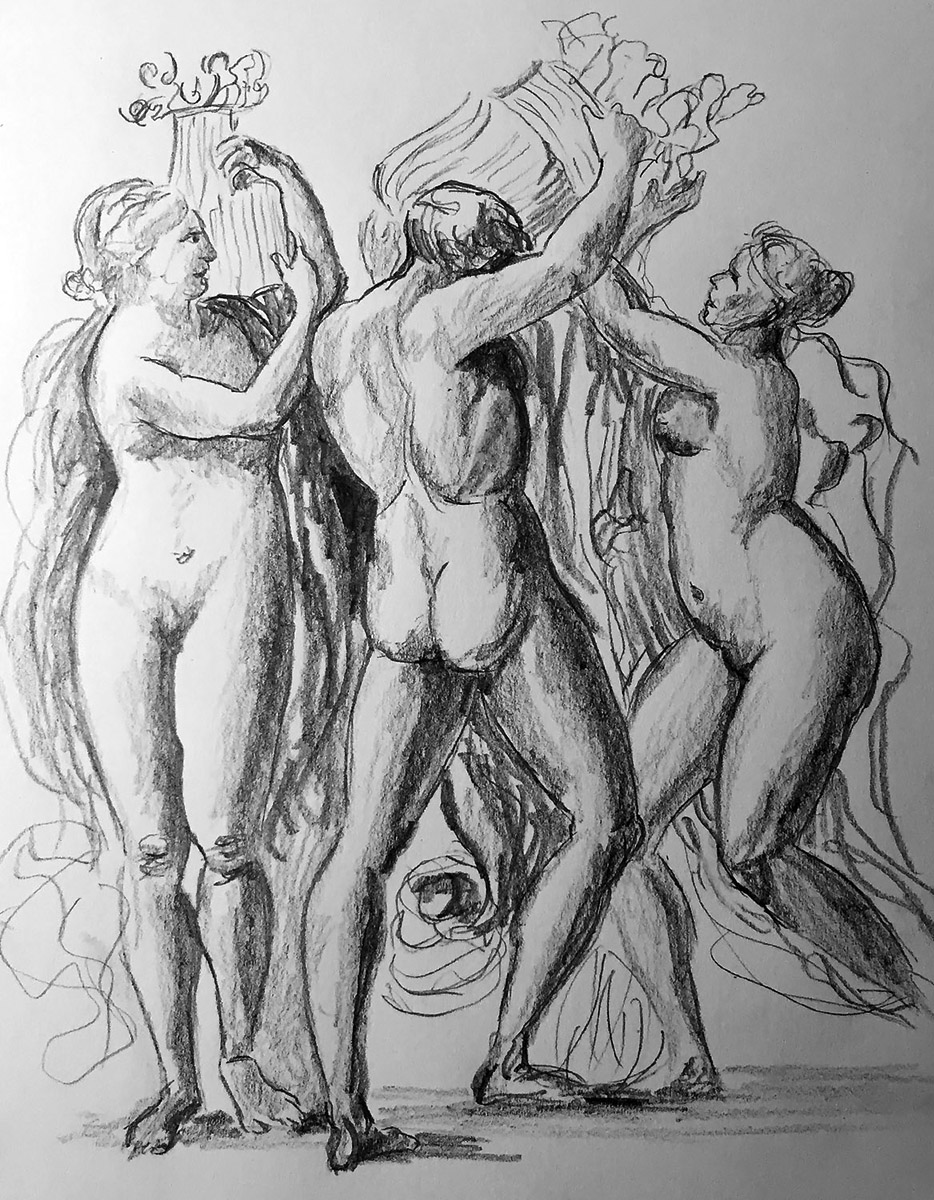
Here is a drawing copied from a work by Raphael Sanzio entitled “nude man between two females”. Raphael’s original drawing was done in pen and ink and is in the collection at the Musee Bonnat in Bayonne. You are probably wondering if it is in Bayonne, France, or Bayonne, New Jersey. Are you really thinking that? I created my drawing in pencil, which is now stored in a folder on a shelf beside my bed. This is one of my drawings that I wasn’t sure if I should even bother uploading. However, since you’re willing to read this blog, you are also willing to view bad copies of old master drawings.
“she said a lot of things”
Now let’s talk a little about Raphael Sanzio. This information comes from the J. Paul Getty Museum of Art. My great-grandmother used to say that we are relatives of J. Paul Getty. Of course, she said a lot of things. I remember she told me she never dropped a dinner plate because she had a strong grip. I think I’m getting off-topic. Now let’s listen to Mister ‘Fancy Pants’ Getty talk about Raffaello.
During the 16th century, the artist biographer Giorgio Vasari crowned Raphael as the “Prince of Painters.” Raphael learned painting from his father and experienced court life in Urbino during his youth. At age 12, Raphael entered the workshop of Urbino’s leading painter and quickly surpassed him. At 21, Raphael moved to Florence, where he studied the art of Michelangelo and Leonardo da Vinci. In Florence, Raphael painted the Madonna and Child many times, displaying his characteristic warmth, serenity, and perfection. As a painter to the papal court, Raphael’s work met with high praise, and he became the most famous artist in Rome within four years. In addition to architecture, paintings, decorations, and antiquities preservation, Raphael was also in charge of all papal projects. The pope was planning to make Raphael a cardinal, but unfortunately, Raphael died before that could happen. He was only 37 years old.

